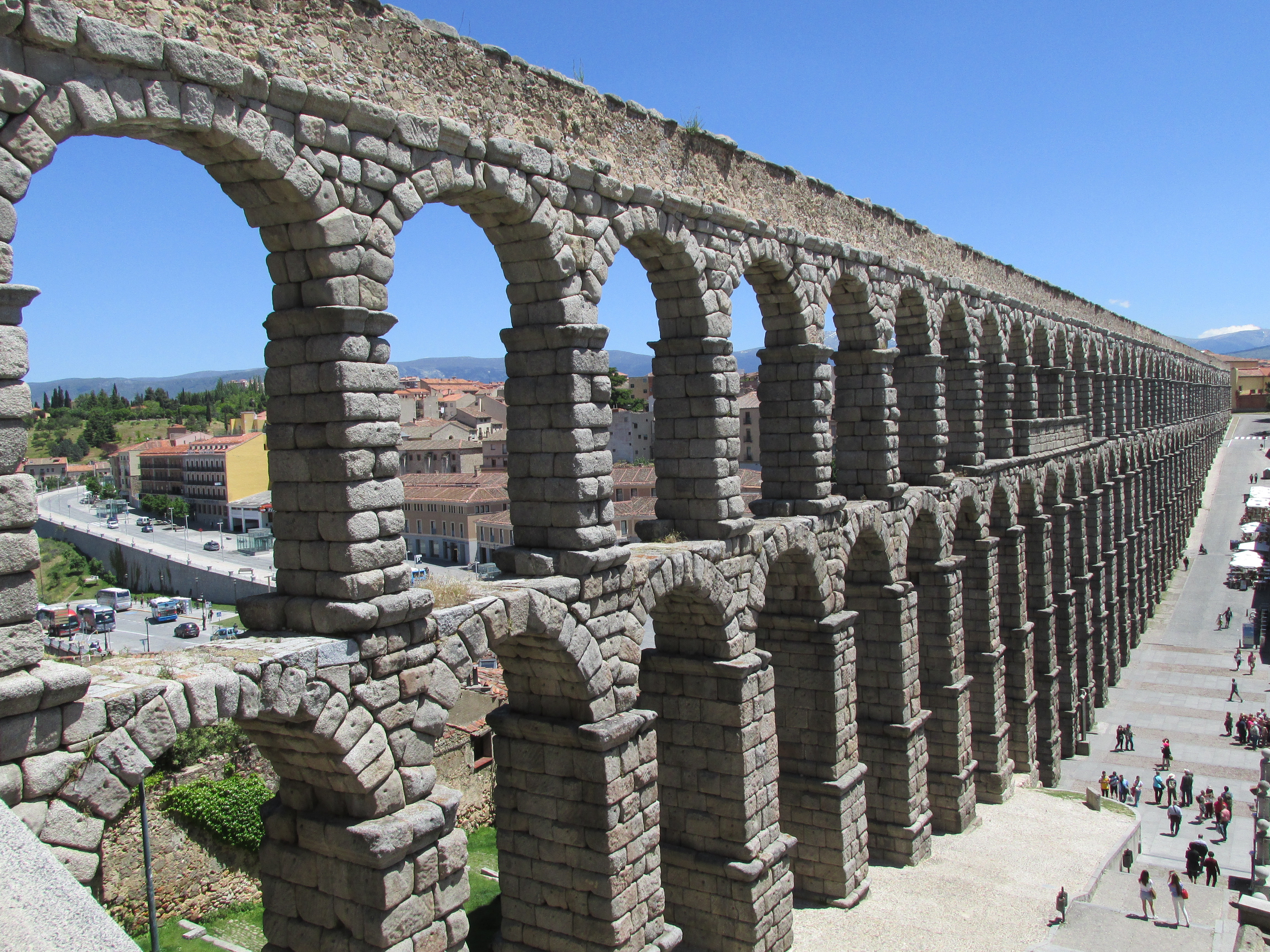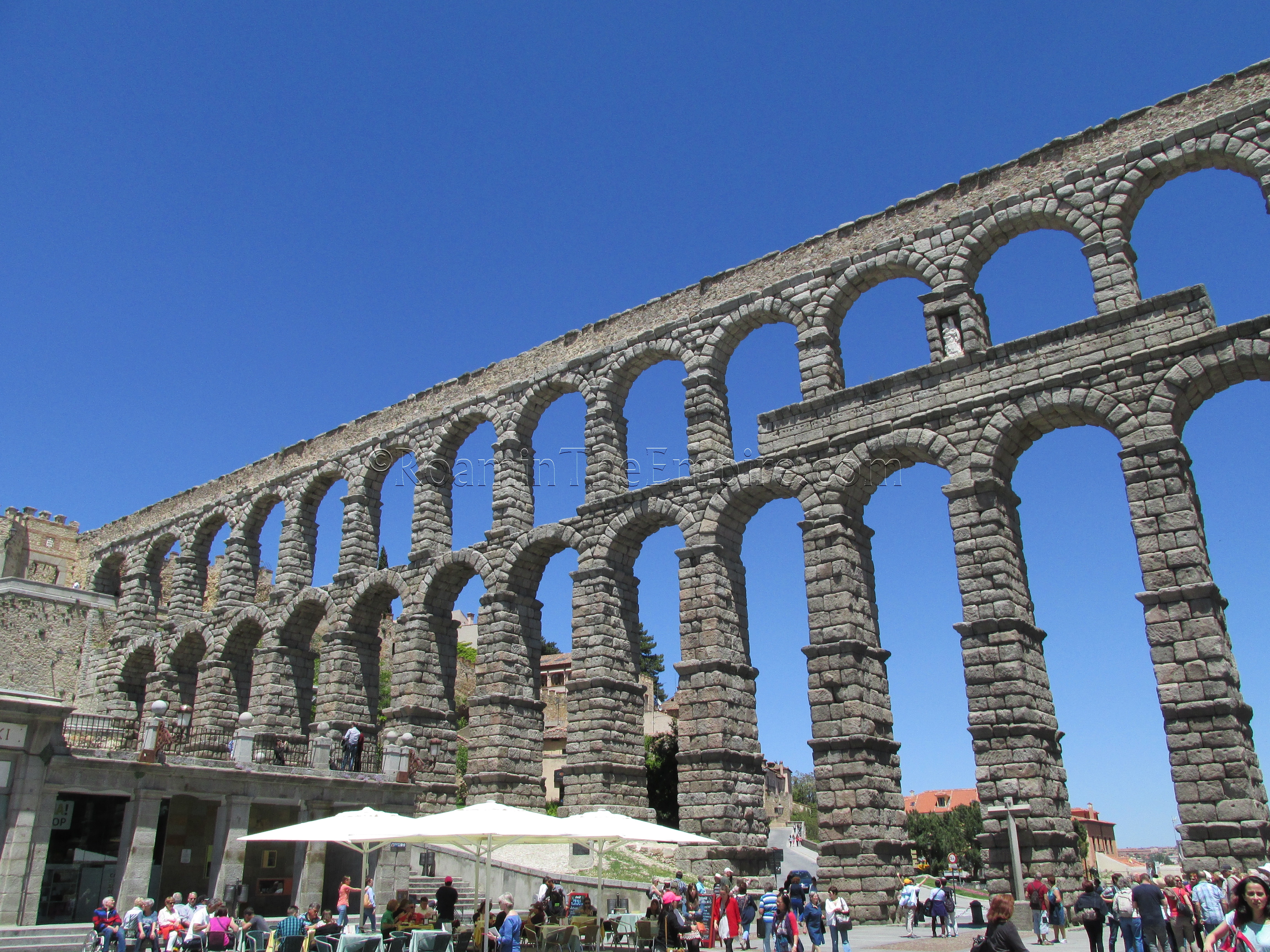
Most Recent Visit: June 2016
Quick Info:
Address:
Casa del Sol – Museo de Segovia
C/ Socorro, 11,
40003 Segovia
Hours:
Tuesday-Saturday 10:00-14:00, 16:00-19:00 (17:00-20:00 July-September)
Sunday 10:00-14:00, Closed Monday.
Admission: 1 Euro
Fresh off a transatlantic flight, I took the opportunity of a mid-morning arrival in Madrid to take a short trip up to Segovia with the remainder of the afternoon. I had originally planned to do the archaeological park/museum at Alcalá de Henares, but the closing times meant I would have been on an exceptionally tight schedule. Despite being exceptionally jet lagged and tired, it made for a pretty easy and rewarding trip.
Getting there: Travel to Segovia from Madrid is possible by either train or bus. I opted to take the bus simply because the train station for Segovia is a few kilometers away from the center of the city and location of the aqueduct. The bus station, on the other hand, is a straightforward walk of less than 10 minutes from the center. Trains run pretty frequently (at least once per hour between 6:00 and 21:00) from Madrid Chamartin to Segovia AV. The trip is about half an hour and costs between 12 and 24 Euro each way. Again, though, the train station is 1.7km from the center via walking the most direct route. There is supposed to be a bus that runs from the train station to the bus station, though. Via bus, the trip is a little longer at about an hour each way, but is more convenient and cheaper. The La Sepulvedana bus line runs out of Moncloa bus station in Madrid (accessible on lines 3 and 6 of the Madrid metro system) to Segovia. Mostly direct buses leave fairly regularly, at least once per hour between 6:00 and 23:00. There are slightly fewer buses back, and the last one typically leaves for Madrid at 21:30. The roundtrip cost is 14.24 Euro.
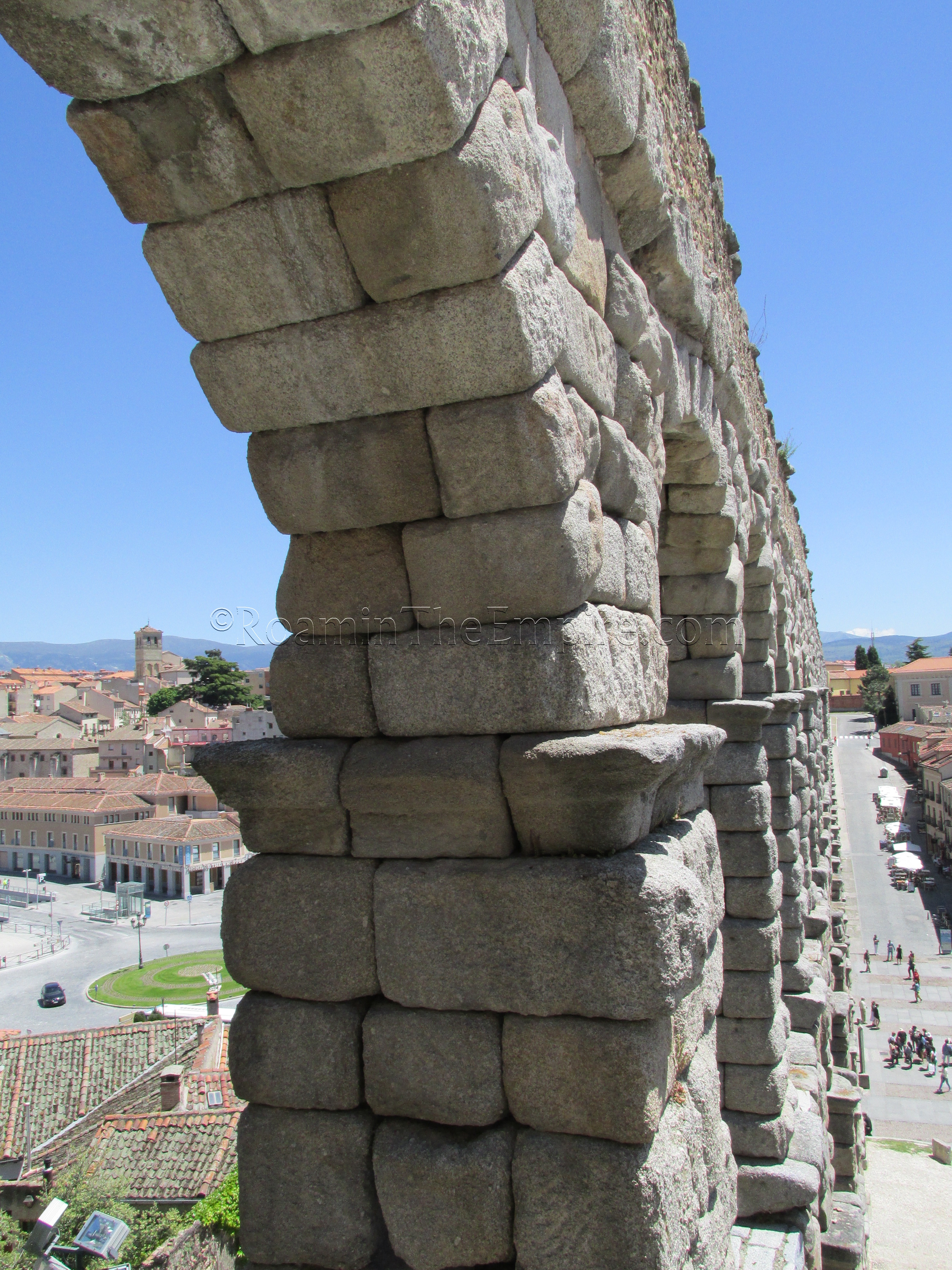
Segovia doesn’t feature much in the historical record. According to Pliny (3.27), the site of Segovia was originally a Celtic settlement in the territory of the Arevaci tribe, while Livy places it with the Arevaci’s allies, the Vaccei. Both tribes fought first against Carthaginian expansion into the area, and later against the Romans. Frontinus specifically mentions the people of Segovia choosing to have their hostages executed by the Lusitanian general Viriathus during the Lusitanian War rather than break a pact signed in 151 BCE and join the rebellion against Roman rule (Stratagemata 4.5.22). Segovia may also have been the site of a battle between Quintus Caecilius Metellus Pius, governor of Hispania Ulterior, and Lucius Hirtuleius in 75 BCE during the Sertorian War; a battle in which Hirtuleius was killed. The Segovia near where the battle took place might also have been a different settlement located near Corduba, though. After Pompey quelled the insurrection, the area became less restive and the Romans began improving the infrastructure of the area. During the time of Augustus, a new road was built between Cesaraugusta (present day Zaragoza) and Augusta Emerita (present day Mérida), with Segovia situated on that road.
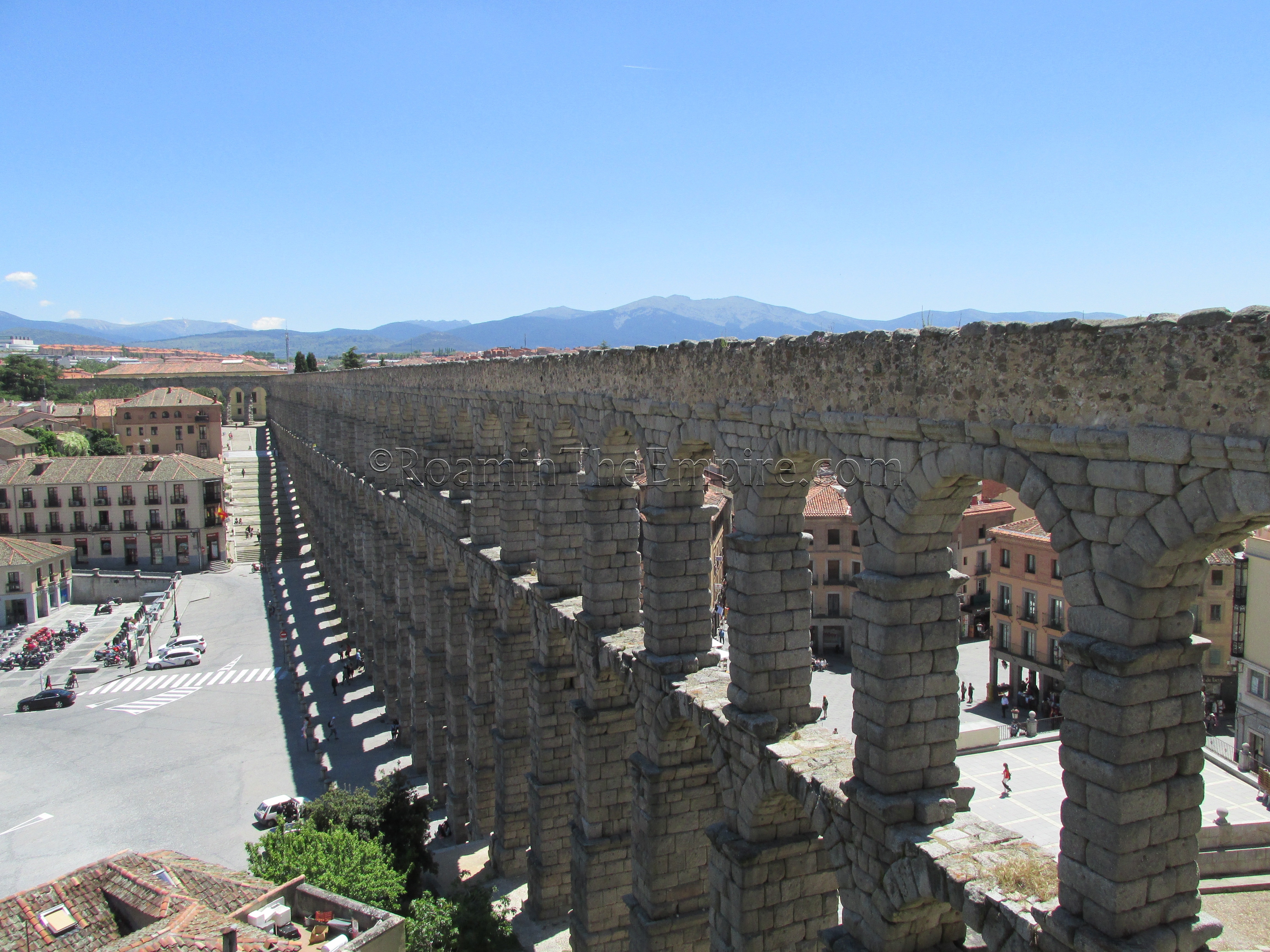
The main attraction for Segovia is the well-preserved section of aqueduct that runs through the historic center of the town. Aside from that, little else remains of view-able vestiges of the Roman past; other structures have been found in the old part of the city, but they are either no longer excavated or not able to be visited. Segovia also has a moderately sized museum with archaeological finds from the area, the Casa del Sol – Museo de Segovia.
From the bus station, the aqueduct is about half a kilometer up the aptly named Avenida Acueducto (roughly northeast). This street brings you right to the foot of the tallest section of the aqueduct. Part of the UNESCO World Heritage Site of the Old Town of Segovia and its Aqueduct, the aqueduct stretches about 17 kilometers from the Fuenfría spring/Rio de la Acebeda to the location of the Alcázar of Segovia, originally the site of a Roman fortification. About 900 meters of aqueduct currently remain standing in the heart of the city.
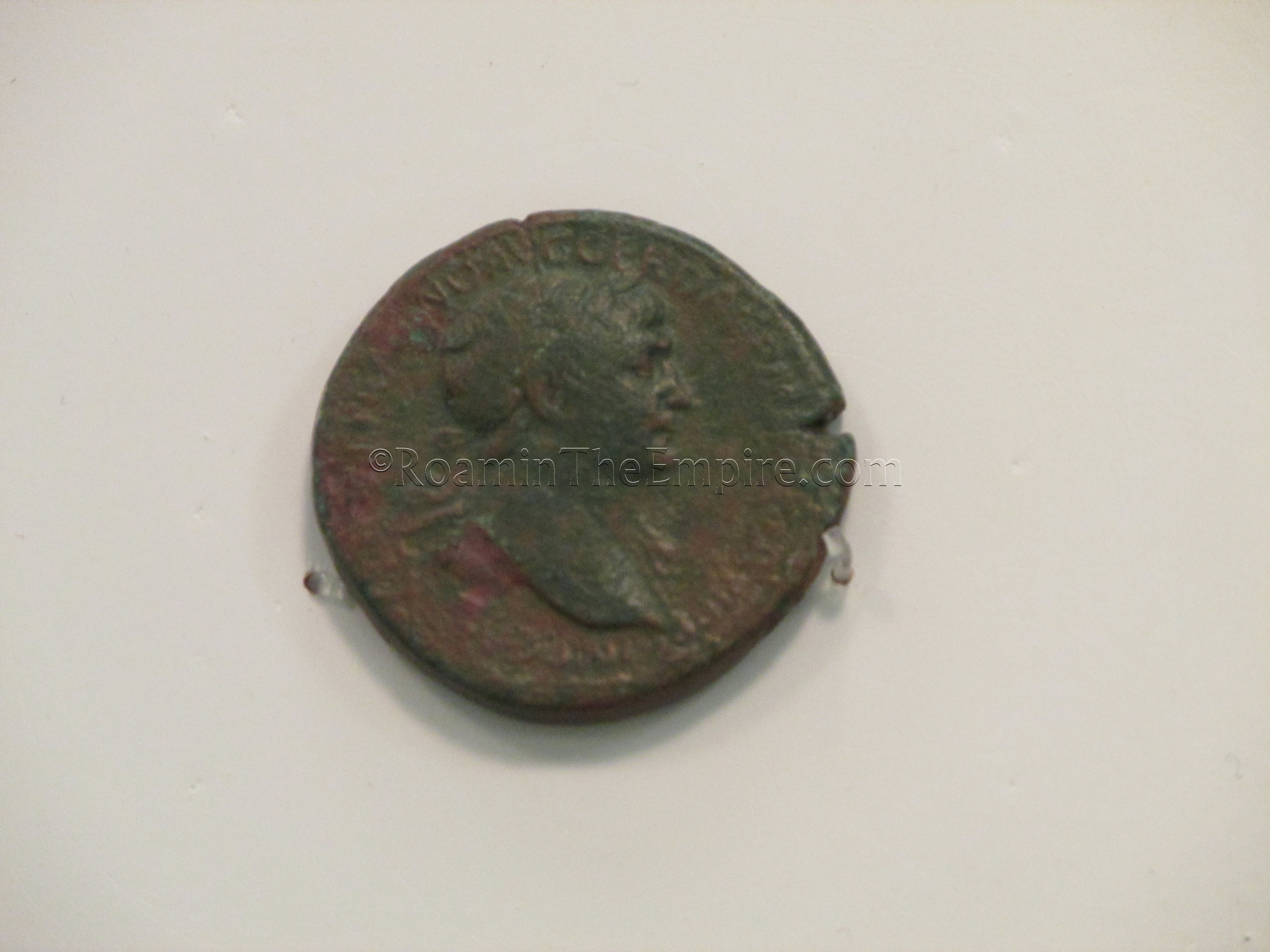
Originally thought to be a late 1st century AD construction, recent finds of coins of Trajan and early 2nd century CE pottery in the fill of the foundations of the aqueduct have pushed the theorized construction date a little later to between 112 and 116 CE. It is constructed of un-mortared granite blocks.
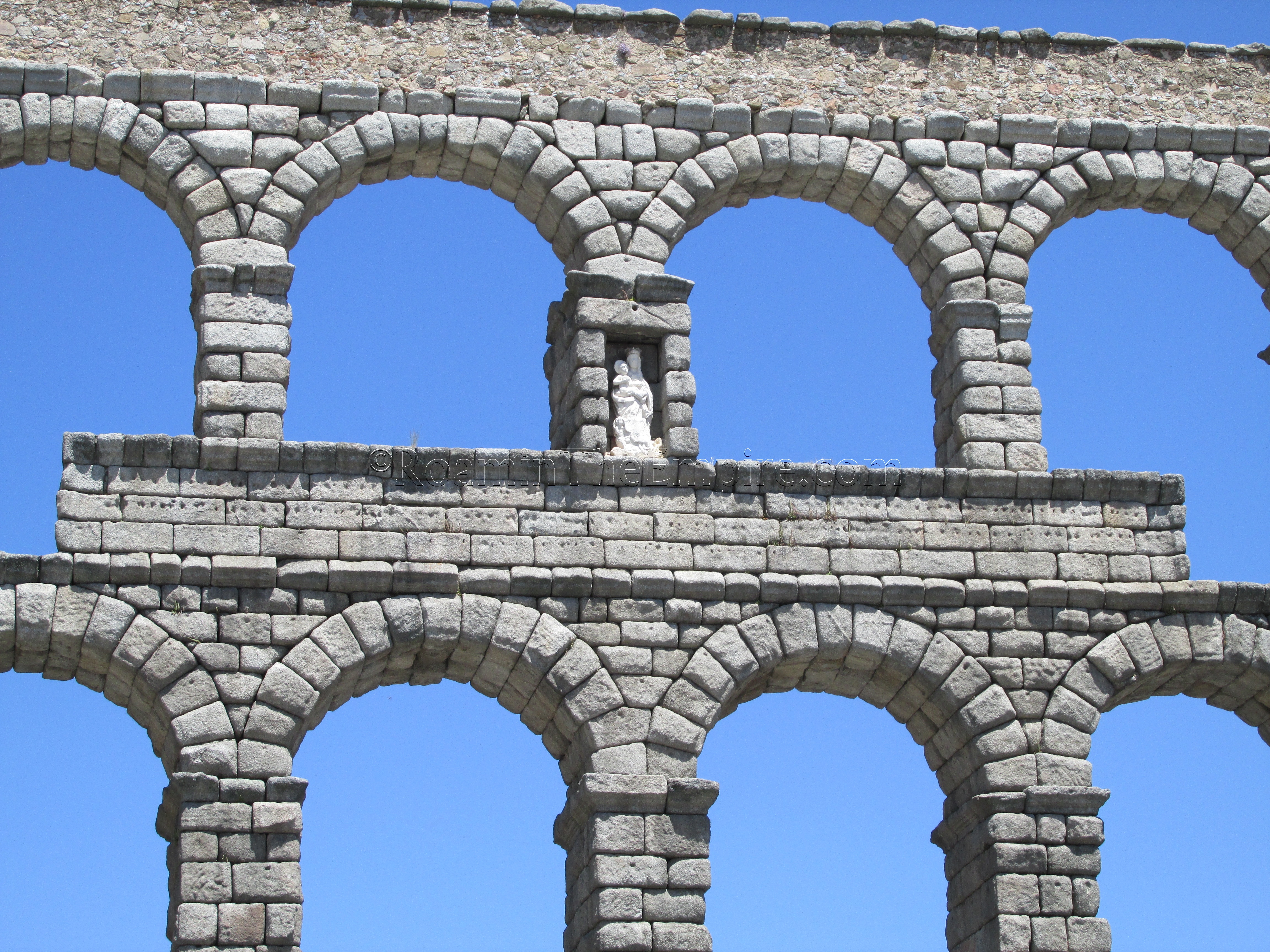
At its highest point, in Plaza del Azoguejo, the height of the aqueduct reaches 22.5 meters above ground level. It is at this peak location that there is an area on the west side of the aqueduct where the no-longer extant dedication was placed. Though the letters do not remain, the mountings for the letters do, and it was the analysis of these mountings that helped to determine the earlier construction date for the aqueduct. A niche above the inscription now holds a statue of the Virgen de la Fuencisla, but it was originally occupied by a statue of Hercules.
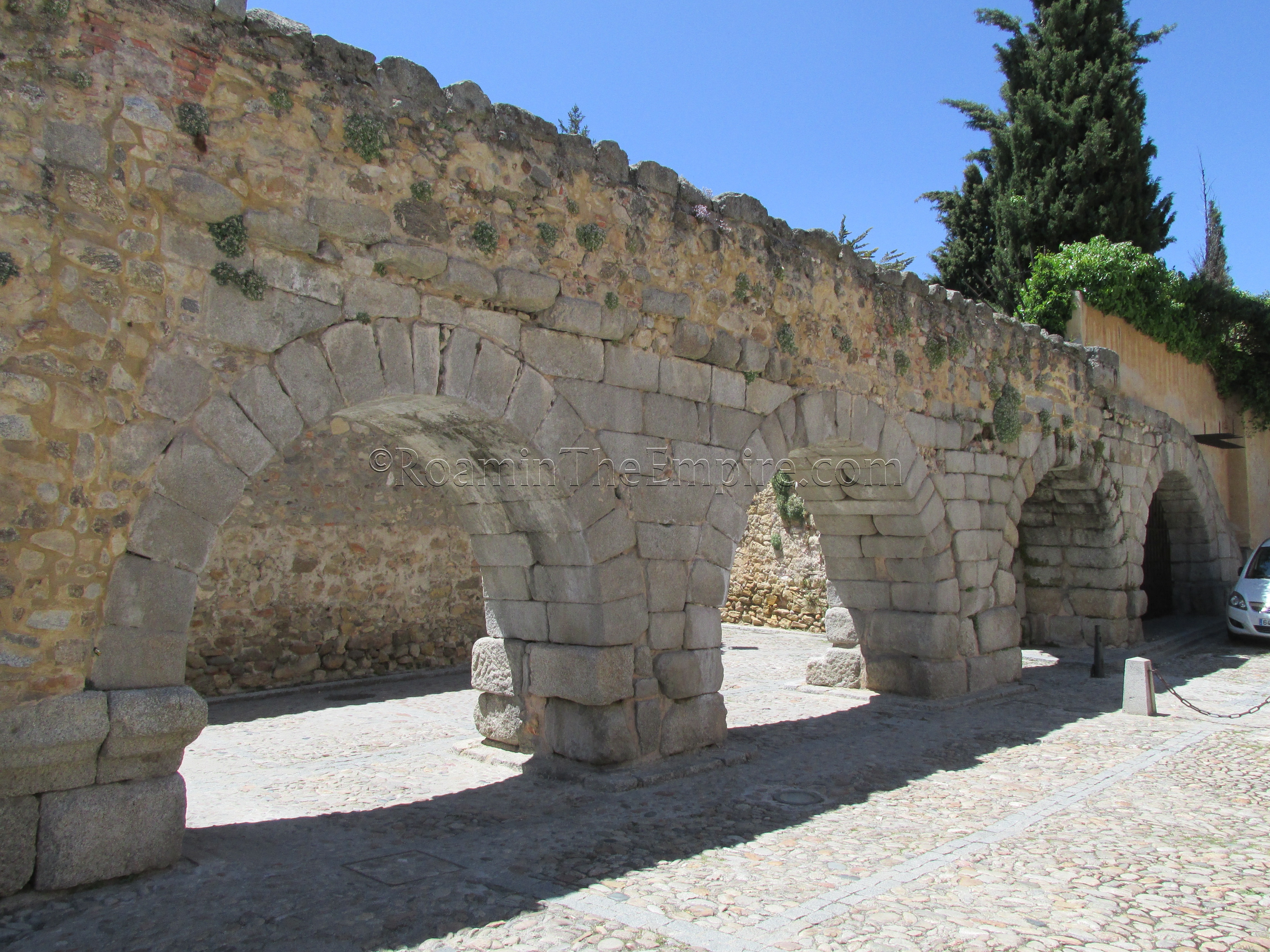
The tallest section of the aqueduct that spans the valley in which Plaza del Azoguejo lies is made up of 44 double arches. As the aqueduct reaches the high ground on the north side of Plaza del Azoguejo, the extant above ground portion of the aqueduct continues for four more single arches in Plaza de Avendaño, with short section of un-arched aqueduct that was not part of the original construction. After that point, the aqueduct is no longer present above ground, but the path can be traced from that point, at which there may have been a castellum aquae, all the way to the Alcázar of Segovia through a series of plaques laid on the street. A few maps placed along the route can be used to follow the path. The blue pins on the embedded map above trace the route with approximate locations of the plaques.
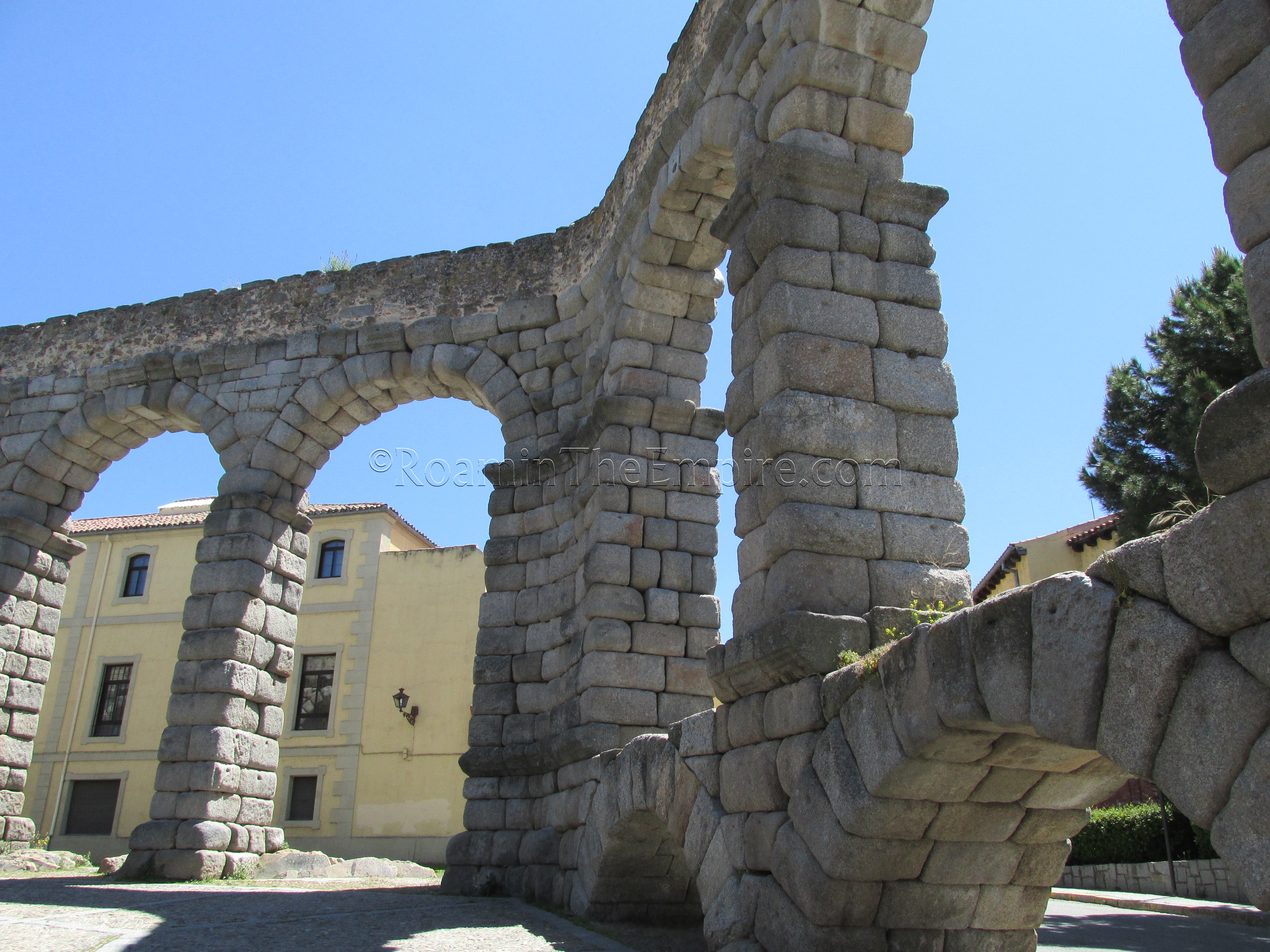
When the aqueduct reaches the south side of the valley, it makes the first of a series of turns and returns to single arches. A grand total of 75 single arches make up the stretch to the south of the valley while the aqueduct winds its way out the southeast of the city. The last 36 arches present in the southern section were destroyed in 1072 CE and later reconstructed in the original style in the 15th century.
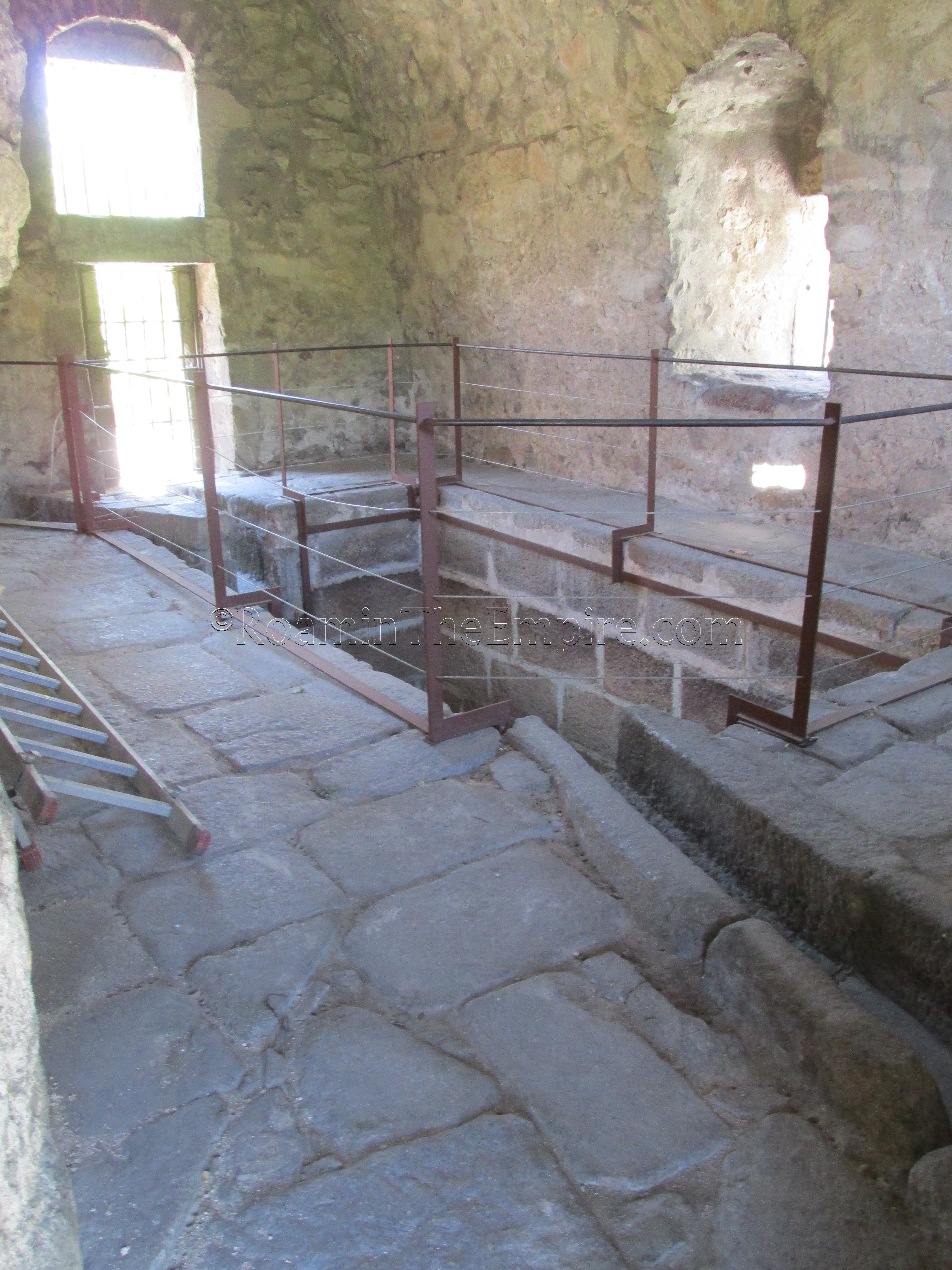
When the arches once again run out, the aqueduct continues a short distance on a reconstructed wall structure to a large building with ancient foundations. While the building was closed when I visited, and didn’t look like it was opened too often, there is a staircase leading up to a barred entrance where the interior can be viewed somewhat. Within the building, the aqueduct channel runs in and out of a large cistern like structure. This seems to have been a filtration catch in which any particulate matter flowing through the aqueduct would sink to the bottom of the basin and the sediment free water would continue along the aqueduct.
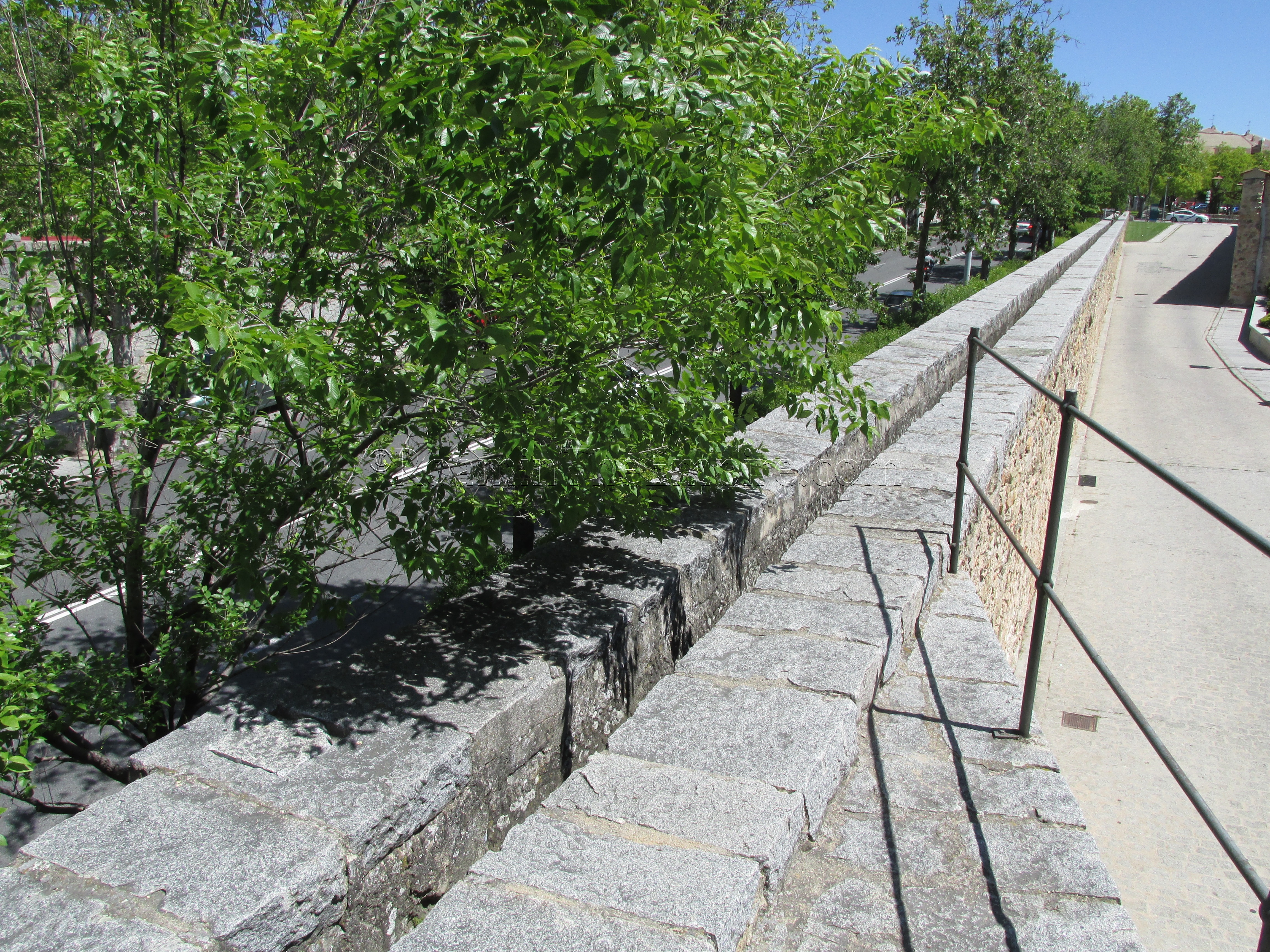
Another section of reconstructed aqueduct continues south out of the filtration structure until it reaches just above ground level, where the contiguous remains of the aqueduct within the city end. Continuing along the road about 600 meters south of the end of the aqueduct, another smaller filtration basin is present, though no other stretches of actual aqueduct channel remain in the area. Though I was not able to visit, there are apparently other extant stretches of aqueduct channel present between Segovia and the source of the aqueduct, of which structures are apparently still visible.
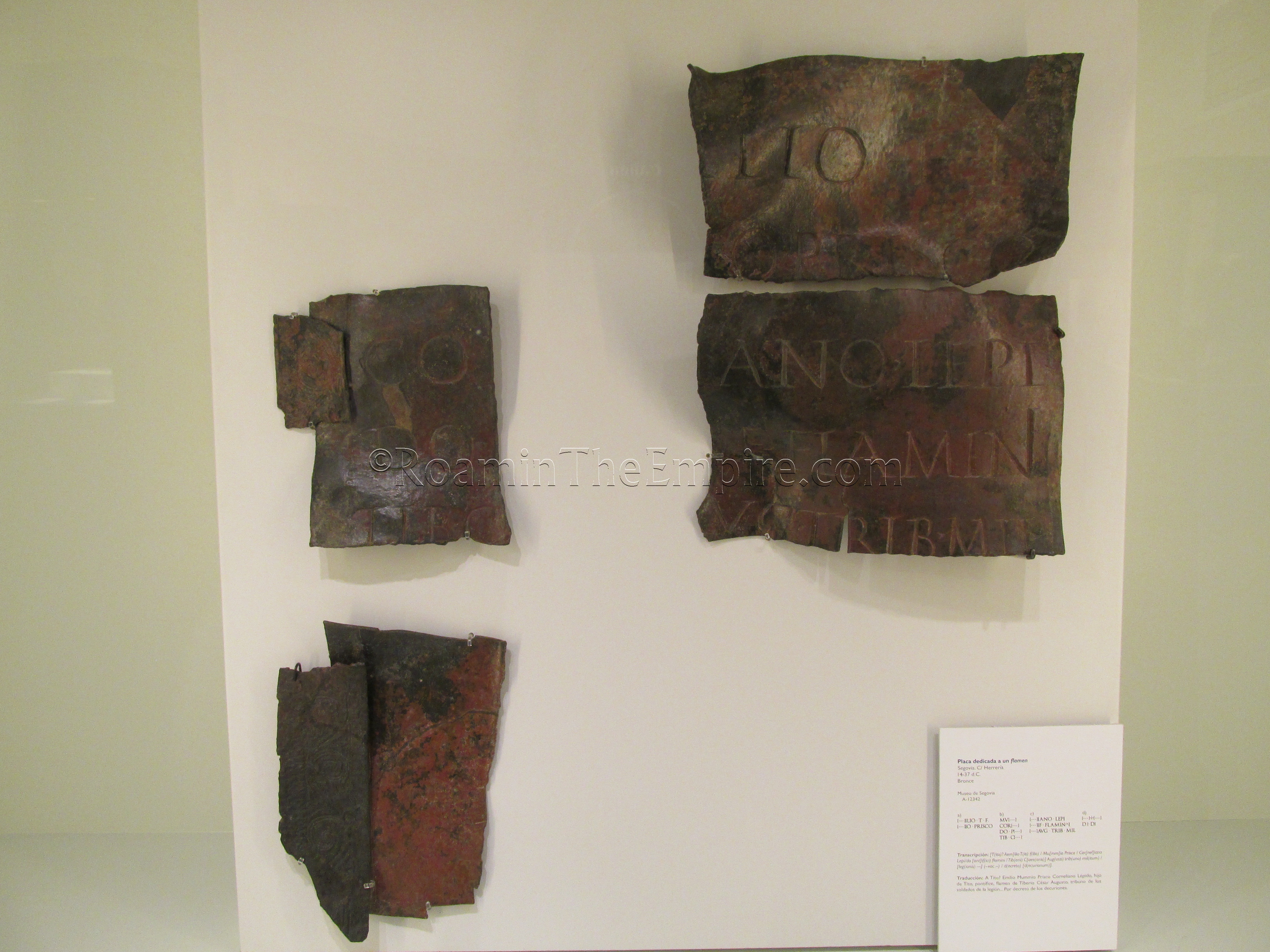
In the western part of Segovia is the Casa del Sol – Museo de Segovia, which, among other pieces related to the history of the city through many different time periods, has a host of artifacts from the Roman period. The museum is open Tuesday to Saturday from 10:00-14:00, and then again from 16:00-19:00 (17:00-20:00 from July to September) and costs 1 Euro for admission. There are lots of odds and ends from finds in Segovia and the surrounding area including fragments of wall decoration, inscriptions, and pottery.
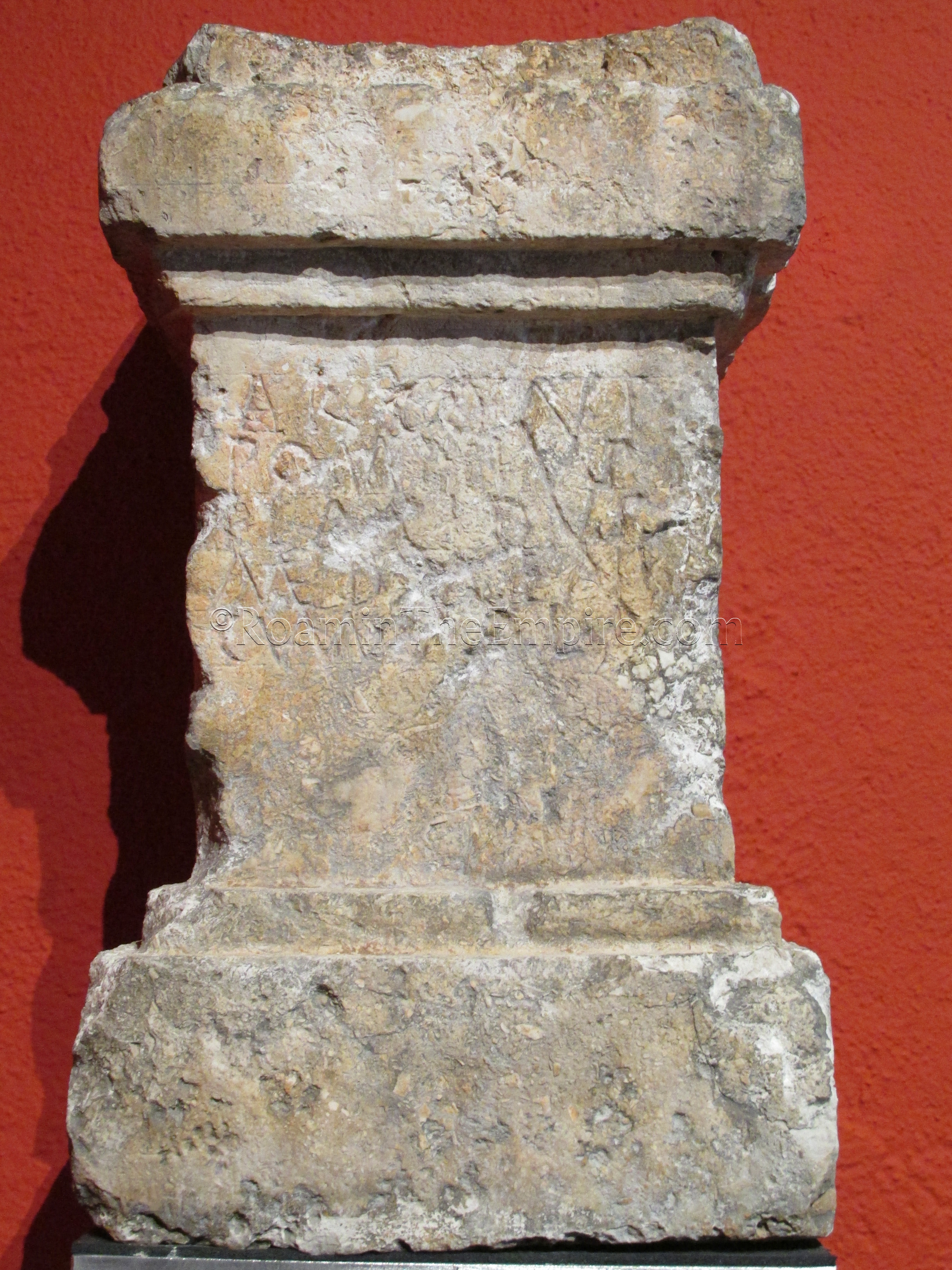
A few particularly interesting pieces in the collection are altars dedicated to Arco, a local deity that seems to be associated with Hercules and Mercury. Also displayed is a coin from the foundations of the aqueduct used to date the construction of it. It is a reasonably sized museum that took me about an hour to get through, including a less attentive walk through the non-archaeological section.
Sources:
Frontinus. Stratagemata, 4.5.22.
Livy, The History of Rome, 91.
MacKendrick, Paul Lachlan. The Iberian Stones Speak: Archaeology in Spain and Portugal. New York: Funk & Wagnalls, 1969.
Pliny the Elder, Naturalis Historia, 3.27.
Roman aqueduct at Segovia, Spain. (2009). Comparative Technology Transfer and Society, 7(3), 1.



